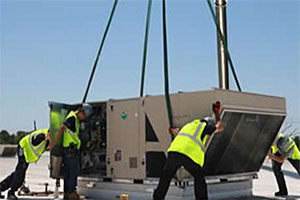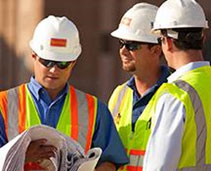
Fired It Up
High costs of miscommunication
Mark, project manager for an HVAC company (headquarters in Salem, Oregon) told Chris and I an amazing story that illustrates how communication can break down as it is passed along from an HVAC sub-contractor to the General Contractor and on to the owners representative. Sounds like the old "telephone gossip" party game.

"We had just installed six roof top units (RTU's) in a new commercial building. Our installation was completed but the other crafts were still working on the site trying to get the new building ready for handoff to the owners. Because it had been a cold winter, the crews asked if we could 'fire-up' the RTU's early (to raise the temperature in the building), so they could set flooring. We said 'Yes, as long as the building owner was okay with it.' We added the condition that they should remind the owner that the RTU's warranty starts the moment the RTU's are 'fired up.'

"The General Contractor's superintendent talked to their Project Manager who eventually got a hold of the owner's representative to relay the message. The requesting crew was told that the message had been relayed to the building owner and then proceeded to fire-up the RTU's. The building owner heard from the General Contractor that we were going to fire up the RTU's and that the warranties were voided.
"Of course, the building owner was irate. Their representative called us directly, complaining about the fact that they had no warranties for their RTU's and this was not their understanding of their contract. We clarified that the original message was meant to state that the warranty starts when the RTU is first initiated. At which point the customer said, "Oh... okay, well since it hasn't been fired up, no harm done." So now we had alerted them that the RTU's had been fired up earlier that week as we had previously coordinated with the General Contractor."
Mark went on to say, "It was a mess but we eventually cleaned up the misunderstanding and said, 'If our crews, contractors, engineers, and owner's representatives were able to communicate better with Turbo communication tools, breakdowns like this miss-communication wouldn't happen.'
"The lesson I learned from this experience is 'What can be misunderstood, Will be misunderstood.' I learned once again that as the initiator of the communication I am responsible for being understood.

"The action I call you to take is check your communication. Ask, 'Can what I am saying be misunderstood?' To tighten up your message be sure you have answered these six questions:
When? Where? Who?
What? How? Why?
"The benefit you will gain is fewer misunderstandings, and you will be seen as a competent, capable leader.

Larry Dennis and Turbo Leadership Systems are moving to Loganville, Georgia March 4th
You can reach Larry at larry@turbols.com cel 503-329-4519

Larry W. Dennis, Sr.
President
Turbo Leadership Systems
Ask 6 questions:
When?
Where?
Who?
What?
How?
Why?

